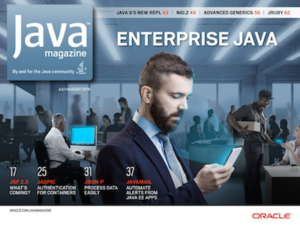 News websites are an irresistible target for hackers because they are so popular. Why? because they are trusted brands, and because — by their very nature — they contain many external links and use lots of outside content providers and analytics/tracking services. It doesn’t take much to corrupt one of those websites, or one of the myriad partners sites they rely upon, like ad networks, content feeds or behavioral trackers.
News websites are an irresistible target for hackers because they are so popular. Why? because they are trusted brands, and because — by their very nature — they contain many external links and use lots of outside content providers and analytics/tracking services. It doesn’t take much to corrupt one of those websites, or one of the myriad partners sites they rely upon, like ad networks, content feeds or behavioral trackers.
Potentially, malware injected on any well-trafficked news website, could infect tremendous numbers of people with ransomware, keyloggers, zombie code, or worse. Alarmist? Perhaps, but with good reason. News websites, which can include both traditional media (like the Chicago Tribune and the BBC), or new-media platforms (such as BuzzFeed or Business Insider) attract a tremendous number of visitors, especially when there is a breaking news story of tremendous interest, like a natural disaster, political event or celebrity shenanigans.
Publishing companies are not technology companies. They are content providers who do their honest best to offer a secure experience, but can’t be responsible for external links. In fact, many say so right in their terms of use statements or privacy policies. What they can be responsible for are the third-party networks that provide content or services to their platforms, but in reality, the search for profits and/or a competitive advantage outweighs any other considerations. And of course, their platforms can be hacked as well.
According to a story in the BBC, news sites in Russia, including the Moscow Echo Radio Station, opposition newspaper New Times, and the Kommersant business newspaper were hacked back in March 2012. In November 2014, the Syrian Electronic Army claimed to have hacked news sites, including the Canada’s CBC News.
Also in November 2014, one of the U.K’s most popular sites, The Telegraph, tweeted, “A part of our website run by a third-party was compromised earlier today. We’ve removed the component. No Telegraph user data was affected.”
A year earlier, in January 2013, the New York Times self-reported, “Hackers in China Attacked The Times for Last 4 Months.” The story said that, “The attackers first installed malware — malicious software — that enabled them to gain entry to any computer on The Times’s network. The malware was identified by computer security experts as a specific strain associated with computer attacks originating in China.”
Regional news outlets can also be targets. On September 18, 2015, reported CBS Local in San Francisco, “Hackers took control of the five news websites of Palo Alto-based Embarcadero Media Group on Thursday night, according to the CBS. The websites of Palo Alto Weekly, The Almanac, Mountain View Voice and Pleasanton Weekly were all reportedly attacked at about 10:30 p.m. Thursday.
I talked recently with Jason Steer of Menlo Security, a security company based in Menlo Park, Calif. He put it very clearly:
You are taking active code from a source you didn’t request, and you are running it inside your PC and your network, without any inspection whatsoever. Because of the high volumes of users, it only takes a small number of successes to make the hacking worthwhile. Antivirus can’t really help here, either consumer or enterprise. Antivirus may not detect ransomware being installed from a site you visit, or malicious activity from a bad advertisement or bad JavaScript.
Jason pointed me to his blog post from November 12, 2015, “Top 50 UK Website Security Report.” His post says, in part,
Across the top 50 sites, a number of important findings were made:
• On average, when visiting a top 50 U.K. website, your browser will execute 19 scripts
• The top UK website executed 125 unique scripts when requested
His blog continued with a particularly scary observation:
15 of the top 50 sites (i.e. 30 percent) were running vulnerable versions of web-server code at time of testing. Microsoft IIS version 7.5 was the most prominent vulnerable version reported with known software vulnerabilities going back more than five years.
How many scripts are running on your browser from how many external servers? According to Jason’s research, if you visit the BBC website, your browser might be running 92 scripts pushed to it from 11 different servers. The Daily Mail? 127 scripts from 35 servers. The Financial Times? 199 scripts from 31 servers. The New Yorker? 113 scripts from 33 sites. The Economist? 185 scripts from 46 sites. The New York Times? 76 scripts from 29 servers. And Forbes, 100 scripts from 49 servers.
Most of those servers and scripts are benign. But if they’re not, they’re not. The headline on Ars Technica on March 15, 2016, says it all: “Big-name sites hit by rash of malicious ads spreading crypto ransomware.” The story begins,
Mainstream websites, including those published by The New York Times, the BBC, MSN, and AOL, are falling victim to a new rash of malicious ads that attempt to surreptitiously install crypto ransomware and other malware on the computers of unsuspecting visitors, security firms warned.
The tainted ads may have exposed tens of thousands of people over the past 24 hours alone, according to a blog post published Monday by Trend Micro. The new campaign started last week when “Angler,” a toolkit that sells exploits for Adobe Flash, Microsoft Silverlight, and other widely used Internet software, started pushing laced banner ads through a compromised ad network.
According to a separate blog post from Trustwave’s SpiderLabs group, one JSON-based file being served in the ads has more than 12,000 lines of heavily obfuscated code. When researchers deciphered the code, they discovered it enumerated a long list of security products and tools it avoided in an attempt to remain undetected.
Let me share my favorite news website hack story, because of its sheer audacity. According to Jason’s blog, ad delivery systems can be turned into malware delivery systems, and nobody might every know:
If we take one such example in March 2016, one attacker waited patiently for the domain ‘brentsmedia[.]com’ to expire, registered in Utah, USA , a known ad network content provider. The domain in question had expired ownership for 66 days, was then taken over by an attacker in Russia (Pavel G Astahov) and 1 day later was serving up malicious ads to visitors of sites including the BBC, AOL & New York Times. No-one told any of these popular websites until the malicious ads had already appeared.
Jason recently published an article on this subject in SC Magazine, “Brexit leads to pageviews — pageviews lead to malware.” Check it out. And be aware that when you visit a trusted news website, you have no idea what code is being executed on your computer, what that code does, and who wrote that code.
 Mrs. Rachael Adams is back, and still wants to give me a fine Bavarian automobile. But is it a 7-series or a 5-series? Is it a 2015 or 2016 model? Doesn’t matter – it’s a scam. Just like the one a few weeks ago, also from Mrs. Adams, but at least that one was clearer about the vehicle. Hey, it’s the same reg code pin as last time, too. See “A free BMW 7-Series car – and a check for $1.5 million!”
Mrs. Rachael Adams is back, and still wants to give me a fine Bavarian automobile. But is it a 7-series or a 5-series? Is it a 2015 or 2016 model? Doesn’t matter – it’s a scam. Just like the one a few weeks ago, also from Mrs. Adams, but at least that one was clearer about the vehicle. Hey, it’s the same reg code pin as last time, too. See “A free BMW 7-Series car – and a check for $1.5 million!”
 Spam scam: Who needs stand-up comedians when laughs appears in my inbox each and every day? This is one of the most amusing in a while, mainly because I can’t parse most of it.
Spam scam: Who needs stand-up comedians when laughs appears in my inbox each and every day? This is one of the most amusing in a while, mainly because I can’t parse most of it. As Aesop wrote in his short fable, “The Donkey and His Purchaser,” you can quite accurately judge people by the company they keep.
As Aesop wrote in his short fable, “The Donkey and His Purchaser,” you can quite accurately judge people by the company they keep. Nothing is scarier than getting together with a buyer (or a seller) to exchange dollars for a product advertised on Craig’s List, eBay or another online service… and then be mugged or robbed. There are certainly plenty of news stories on this subject, but the danger continues. Here are some recent reports:
Nothing is scarier than getting together with a buyer (or a seller) to exchange dollars for a product advertised on Craig’s List, eBay or another online service… and then be mugged or robbed. There are certainly plenty of news stories on this subject, but the danger continues. Here are some recent reports: Can someone steal the data off your old computer? The short answer is yes. A determined criminal can grab the bits, including documents, images, spreadsheets, and even passwords.
Can someone steal the data off your old computer? The short answer is yes. A determined criminal can grab the bits, including documents, images, spreadsheets, and even passwords. As a technology analyst, I read a lot of market reports. Most are not as crunchy (and unpalatable) as the Global Market Study on Edible Insects, by
As a technology analyst, I read a lot of market reports. Most are not as crunchy (and unpalatable) as the Global Market Study on Edible Insects, by  What is the most important part of your house of worship? Is it the spiritual well-being of the community or good attendance at adult classes and innovative programming events?
What is the most important part of your house of worship? Is it the spiritual well-being of the community or good attendance at adult classes and innovative programming events? CQ CQ CQ de IOC: The Organising Committee for the Tokyo 2020 Games have approved new competitions to celebrate Amateur Radio.
CQ CQ CQ de IOC: The Organising Committee for the Tokyo 2020 Games have approved new competitions to celebrate Amateur Radio. What’s it going to mean for Java? When Oracle purchased Sun Microsystems that was one of the biggest questions on the minds of many software developers, and indeed, the entire industry. In an April 2009 blog post, “
What’s it going to mean for Java? When Oracle purchased Sun Microsystems that was one of the biggest questions on the minds of many software developers, and indeed, the entire industry. In an April 2009 blog post, “ The newest issue of the second-best software development publication is out – and it’s a doozy. You’ll definitely want to read the July/August 2016 issue of
The newest issue of the second-best software development publication is out – and it’s a doozy. You’ll definitely want to read the July/August 2016 issue of  Here’s a popular article that I wrote on email security for Sophos’ “Naked Security” blog.
Here’s a popular article that I wrote on email security for Sophos’ “Naked Security” blog.  When it comes to cars, safety means more than strong brakes, good tires, a safety cage, and lots of airbags. It also means software that won’t betray you; software that doesn’t pose a risk to life and property; software that’s working for you, not for a hacker.
When it comes to cars, safety means more than strong brakes, good tires, a safety cage, and lots of airbags. It also means software that won’t betray you; software that doesn’t pose a risk to life and property; software that’s working for you, not for a hacker. News websites are an irresistible target for hackers because they are so popular. Why? because they are trusted brands, and because — by their very nature — they contain many external links and use lots of outside content providers and analytics/tracking services. It doesn’t take much to corrupt one of those websites, or one of the myriad partners sites they rely upon, like ad networks, content feeds or behavioral trackers.
News websites are an irresistible target for hackers because they are so popular. Why? because they are trusted brands, and because — by their very nature — they contain many external links and use lots of outside content providers and analytics/tracking services. It doesn’t take much to corrupt one of those websites, or one of the myriad partners sites they rely upon, like ad networks, content feeds or behavioral trackers.